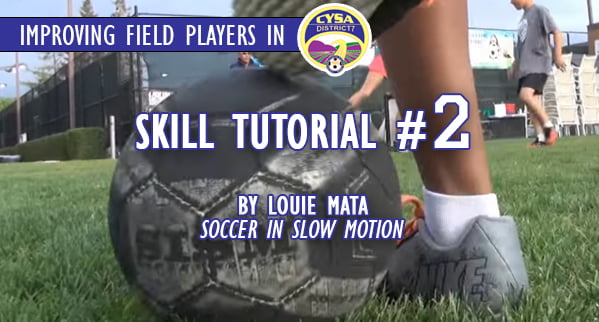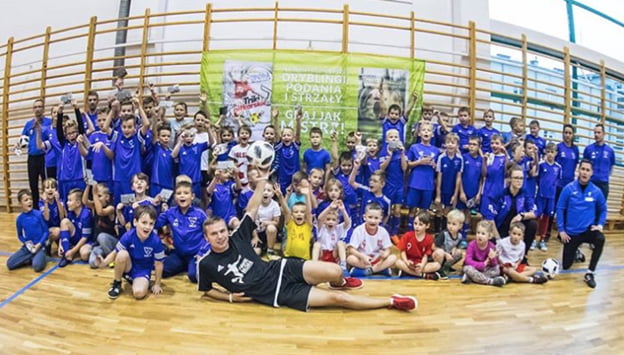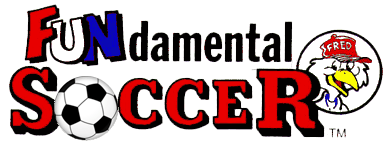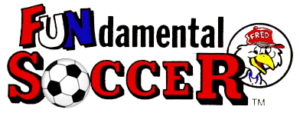
Juggling Basics – In depth and best training practices!
We’re going to review the basics of juggling a little further as it serves as a foundation for ball control and get everyone started off on the right foot in 2019! We’ll cover 1) Technique, 2) Mental notes, and 3) Rewarding Training Methods. These very same techniques will be taught in our winter program in January.
What’s significant about the simplicity here? We are an advanced ball control program and our team members are some of the best in the world including the 2x World Freestyle Champion from Poland. As world freestyle champion, it’s critical that the foundational touches enable everything from the simple to the most complex combos. And the complex only happens with efficiency (see #2 below). So let’s jump right into a review of the techniques!
Techniques
Last article we saw the juggling tutorial (click here if you missed it) and covered the following:
- Make contact with the ball at the spot above the toes, not the laces.
- Flick the leg out from the knee (2a, 2b), as opposed to lifting the leg from the hip joint (2c).
- And last, aim to keep the ball around knee height when juggling.

As a reminder, the toes cushion the point of contact and prevent the ball from bouncing off of a hard surface such as the instep area of the foot. Keeping the ball knee-high makes for efficient touches and makes it easy to visually track the ball’s path.
Mental Notes
Here are two tips that I remind our players when it comes to learning new skills:
- The training we do today leads towards our progress in the near future, such as one month from now after consistent practice. Do not worry about how you feel your session went “today”. The more opportunities your foot has to touch the ball the further your development will go. Think of it as a law of training: it’s almost impossible not to improve with consistent work. So get to work, you need today’s practice
- I was practicing a skill that I felt was difficult and one that I consistently failed at in the beginning. The dreaded head-stall. Put the ball on your forehead to try and balance it and watch it fall right off! If you looked for success on the same day you’d find more failed attempts than noticeable progress. So when the 2x World Champion was on tour with us I asked him if there were any secrets to doing it better. I share his response with all my groups working on a new skill: “Amigo, there is no secret, practice.”

Rewarding Training Methods
There are a couple ways to go about training on either a hard surface or even the grass. Starting with the ball in the hands (we can work on the initial flick up later) let the ball drop. On a hard surface you can let the ball bounce first and on grass you can practice without the initial bounce.
If you’re on a hard surface you can use the following sequence:
- Let the ball bounce and with your right foot tap the ball up and catch it with your hands.
- Let the ball bounce and with your left foot tap the ball up and catch it with your hands.
- Remember the coaching points of using the area above the toes to make contact and the ball should be kept below the chest on their touches.
Initially:
- Give players an easy challenge that they can be successful at: They must “Drop, Tap, & Catch” after single touches and do so 5x on each foot. Skill levels vary and this will be easy for some, awesome! You then challenge those players to do 2, 3, or 4 touches before catching. You’ve got the idea now and can challenge everyone in the same exercise based on their skill level.
- Everyone has completed their first tasks of 5 easy ones, now increase everyone’s goal by one additional touch! Now they take on their new challenge and they must perform 5x on each foot.
- Choose your number of successful catches to vary your training timeframe, etc. 8x per foot.
Eventually:
- Players must flick the ball up and catch it.
- Players must flick the ball up and juggle 2x then catch, etc…
- By giving them a target number they can “race” to they can see who finishes first and adding a competitive nature to it.
- During their race they must execute x# (6x for example) in a row, if they drop a catch then they must start their count over again from 0!
Why catch the ball after each successful execution of touches (1x, 2x, etc.)?
- FUN: New players tend to feel incompetent with their juggling abilities but quite confident with their catching skills! After each number of touches they’ve been challenged with, they’re rewarded with the opportunity to use an easy skill they’re great at, catching. Some will dive to catch it to make it count, it is fun!
- PRODUCTIVE: Requiring players to catch the ball asks them to touch the ball into the space where their hands are when catching… just around knee height. Controlled execution of the Drop, Tap, and Catch sequence results in a mental focus on the ball being juggled efficiently where it belongs, right in front of us.
- WHY NOTS: Why not practice with bounces in between? In trying out the bounce option I find that it allows players to make any touch that goes upwards, as opposed getting straight to practicing a touch that comes straight back up around the knee area. It results in players making less than ideal touches, too much backspin on touches, and chasing the next touch to keep it going. The practice doesn’t require that they aim for a particular spot to touch the ball.
So off you go! Get your players having fun, succeeding, and working towards the progress that comes after a month of consistency!!!
Happy New Year everyone!
Louie and the SISM team




